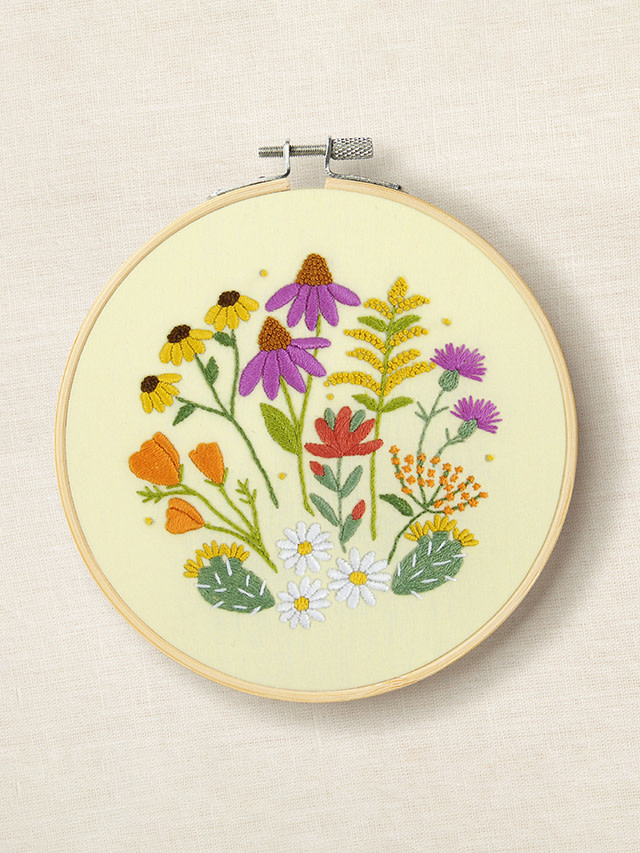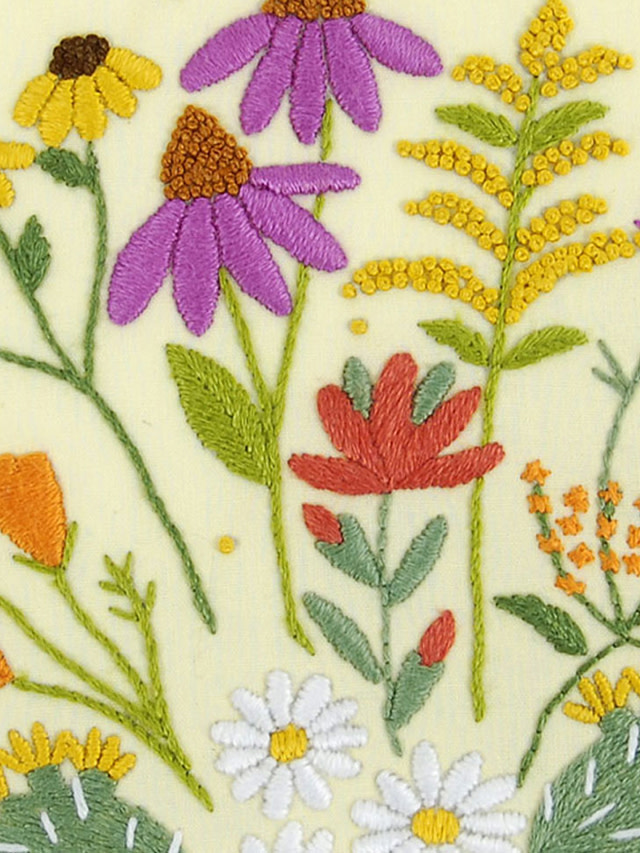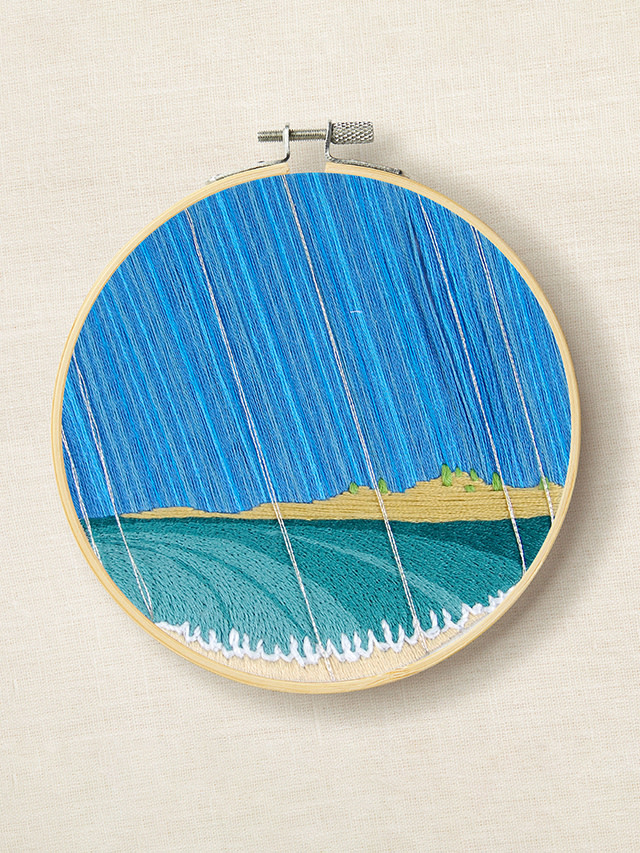It’s easy to overlook but the angle and orientation of stitches in relation to the design or pattern can really enhance embroidery. In this article, we will discuss the importance of stitch direction and how you can use it to take your embroidery to the next level.
Add Texture
Stitch direction can have a significant impact on the texture of your work. By carefully choosing the placement of each stitch, you can create a design that looks more professional, polished, and visually appealing. For example, aligning each stitch within a shape can create a smooth, even look, whilst overlapping stitches and alternating stitch directions can add texture and depth to the design.


In this close up of Celeste Johnston’s design for the Designer Collection, you can see how all the stitches in this leaf are carefully placed next to each other to give it a smooth appearance. They are also angled from the central vein of the leaf fanning out to edges echoing the patterns found in nature.
This is what Celeste had to say about the importance of stitch direction in her work:
“When you’re just getting started with embroidering botanicals, stitch direction may not come to mind, but it’s something you can experiment with as your embroidery work naturally advances. I like to observe petals and leaves in real life and try to emulate their natural patterns with my stitch direction. Often I like to place my satin stitches in a direction so that they radiate out from the centre of a flower. For leaves, I like the satin stitches to lay at the same angle as the lines of a leaf might lay. Stitch direction for satin stitch is something that can make a big difference in how your embroidery looks, and can be a fun challenge when your embroidery skills are ready.”
Create a Sense of Movement
The direction of stitches can also be used to create a sense of movement or flow that can be quite dramatic. This is something Victoria Rose has used to great effect in her design Ocean Rain which was created for the Designer Collection.


The slanted stitches streaking across the sky dramatically evoke heavy rainfall. She has contrasted these stitches with horizontal stitches for the land. She has also used the direction of the stitches in the sea to create the sweeping curve of the ocean, gently changing the angle from almost vertical in the foreground to almost horizontal on the horizon.
Define Shapes
Stitch direction can define shapes more clearly if stitches are placed sympathetically within a shape to emphasise the form of the shape itself. For example, if you place your stitches in alignment with the planes of a cube you achieve a very different effect to a diagonal placement within the same cube.
Similarly, stitching horizontally across a circle gives a very different effect to positioning stitches so they fan out from the centre.
Stitch direction is a crucial element of embroidery that should not be overlooked. By paying attention to the direction of each stitch, you can enhance the appearance of your embroidery, add textures and depth, create a sense of movement, and define shapes and lines within the design. So the next time you pick up your embroidery needle, take time to carefully choose the orientation of each stitch.



